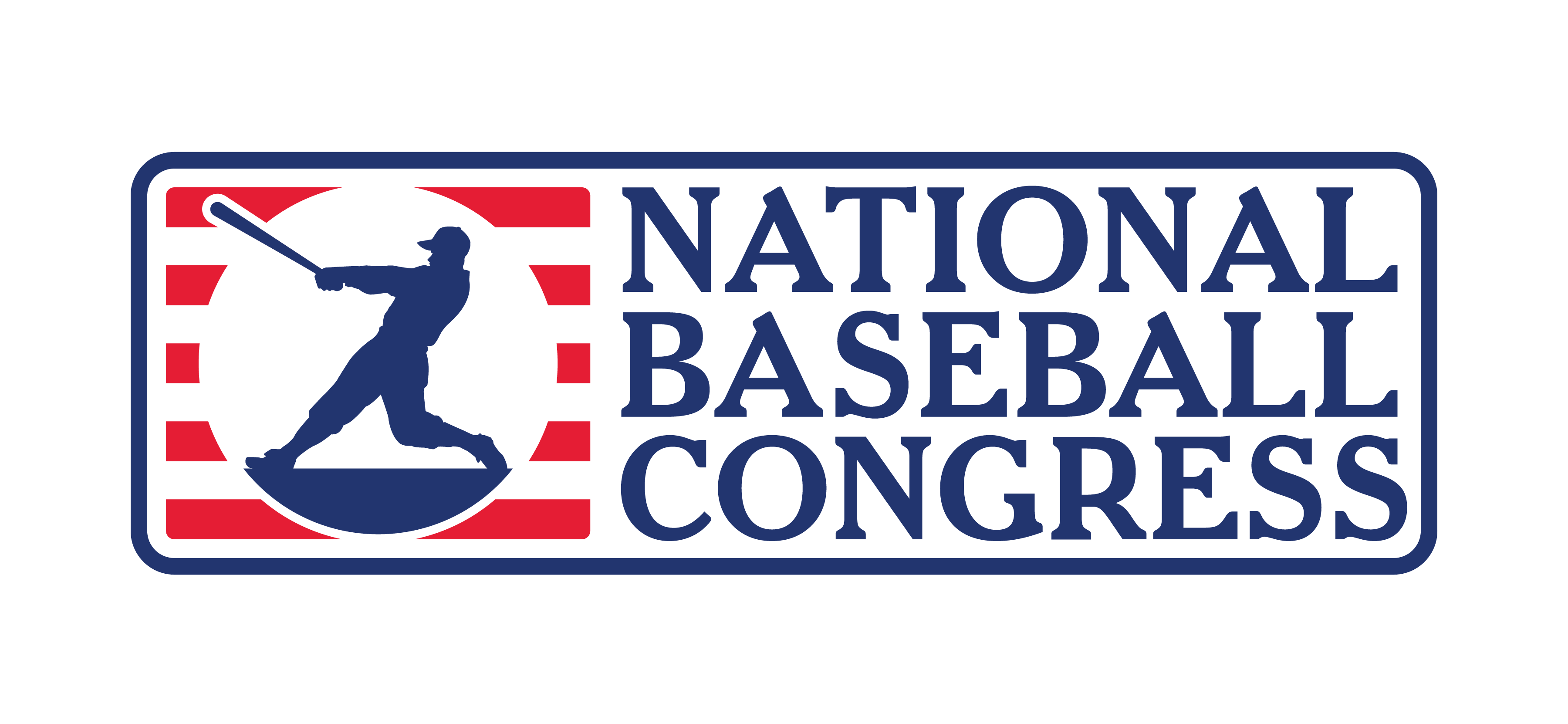Bruce “Bruno” Konopka
September 16, 1919 – September 27, 1996
Leyden (CO) Miners 1937
Golden (CO) Coors 1939-40, ’47-’49
Inducted 2024
A two-time All-American first baseman and MVP of the NBC World Series in 1947, Bruce “Bruno” Konopka was born in Hammond, Indiana, in 1919, but spent the majority of his life in Colorado. He played baseball, basketball and football growing up, and before he had even graduated high school, he was known nationwide for an event on the gridiron as a senior. On October 23, 1937, he punted a ball from the back of his own end zone that travelled in the air for 77 yards before rolling another 55, making it the longest punt in history at a total of 132 yards. “Ripley’s Believe It or Not” certified the feat, and published it in newspapers across the country complete with an artist’s rendering of Konopka himself. A few die-hards of the NBC may have recognized his name when they saw the article, as he had already participated in his first tournament that summer. Playing for the Leyden Miners, along with fellow NBC Hall of Famer Allie Reynolds, who were the Colorado state champions, Konopka went 3-9 (.333) in their quick two game stay. 
After graduation in 1938, he considered going to the University of Oklahoma to play basketball, but was named the best Major League Baseball prospect in the NBC Colorado state tournament, and the St Louis Browns subsequently offered him a contract. Konopka declined, saying it wasn’t a good enough offer, and decided instead to go to college and play baseball at USC. He continued to play semipro ball throughout his college days with the Golden (CO) Coors, twice making it to Wichita in ‘39 and ‘40. He hit .272 with two doubles and two triples in those visits, with Coors advancing as far as the quarterfinals in ‘39.
At USC in 1941, he led the entire conference in doubles, triples and average hitting .431. He was named team captain prior to 1942, and in the pre-College World Series days, led the Trojans as far as they could go, which was winning their conference. The Philadelphia A’s signed him on May 28, and he made his major league debut just 10 days later. He appeared in a handful of games with them, but spent most of the year in the minors. After having played just two more games for the A’s in ’43, the U.S. Navy called him to serve in World War II. He was stationed at least some of that time in Hawaii, and while there he continued to play baseball with the Navy Jack Tars, in a league that also included Joe DiMaggio.
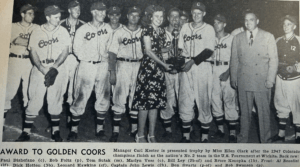 When the war ended, he split the 1946 season between the minors and in Philadelphia mostly as a pinch-hitter with the A’s. In fact, he only played complete games in 21 of his 45 career appearances. He hit .292 during a thirteen-game stretch where he did get to play entire games every day. The A’s were beyond dreadful during that era, making it surprising they didn’t give him more of an opportunity, even though their record was 4-40-1 in the games he appeared in. He started 1947 in the minors before being released in early May.
When the war ended, he split the 1946 season between the minors and in Philadelphia mostly as a pinch-hitter with the A’s. In fact, he only played complete games in 21 of his 45 career appearances. He hit .292 during a thirteen-game stretch where he did get to play entire games every day. The A’s were beyond dreadful during that era, making it surprising they didn’t give him more of an opportunity, even though their record was 4-40-1 in the games he appeared in. He started 1947 in the minors before being released in early May.
With his professional baseball career behind him, Konopka returned to the NBC with Golden that summer as well as the next two years, and permanently left his mark on the tournament. Hitting .390 overall during those three World Series, he led Coors to the finals in ‘47 and ‘49, was the first baseman named to the All-American Team in both ‘47 and ‘48, and was the MVP in ‘47.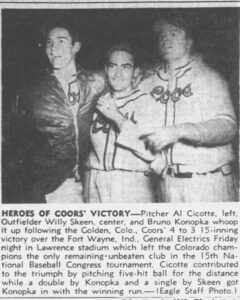
He hit an astounding .801 in the regular season for Golden in 1947, and clearly was having his best year ever when they arrived in Wichita. He had at least one hit in all 9 of their World Series games, on his way to a tournament record 19, and also made front page headlines when he established a single game record hitting 4 doubles on August 17. In the two game finals a few weeks later, which drew a combined 14,000 fans, Konopka had 2 hits in each, but Coors ultimately fell to the Ft Wayne (IN) General Electrics in the finale 4-2. For the tournament, Konopka hit .514 (19/37) with 2 home runs and 8 doubles. His 4 doubles in a game have only been matched once since (Jake Rowell, Clarinda 2008), and his 8 doubles for a single tournament solely remains his record. Also, his 19 hits are still second all-time (Greg Morris, Elkhart 1993), and are the most overall in the wooden bat eras of the NBC (1935-1973, 2000-present). 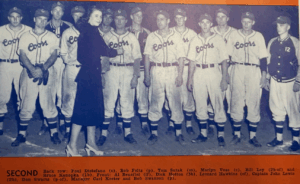
1948 would see him take home All-American honors again, hitting .357, but Coors bowed out in the quarterfinals after blowing a late 6-1 lead to the eventual runner-up Chatman (NC) Blanketeers.
Golden and Konopka returned for one final time in 1949, as one of the favorites to win the championship. They met their rivals, Ft Wayne, as the only remaining unbeatens in a 5th round classic. An overflow crowd of more than 10,000 watched as they battled for three hours and 42 minutes. In the bottom of the 15th, Konopka led off with a double, and then scored on a single by the next batter, and Coors won 4-3. They were still undefeated entering the finals with Ft Wayne as their opponent yet again. With the General Electrics needing to win twice, Konopka’s bat went cold along with the rest of the team, and Coors came up short of their ultimate goal of an NBC World Series title.
The Golden Coors disbanded prior to the 1950 season as new rule changes from the NBC regarding roster construction hampered their ability to field the same team. Konopka then played in the Nebraska Independent League (NIL) for a few seasons where he won the league’s Triple Crown in ’50. He capped off that season by hitting 2 home runs in game 7 of the championship series, leading his team to the league title. A few years later he was named to the NIL All-Time All-Star Team.
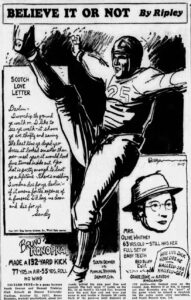 Konopka retired from baseball after the 1953 season to raise his family in Colorado. He worked for Coors Brewery as well as in the banking and real estate industry, and passed away at 77 in 1996.
Konopka retired from baseball after the 1953 season to raise his family in Colorado. He worked for Coors Brewery as well as in the banking and real estate industry, and passed away at 77 in 1996.
Konopka’s career NBC World Series totals – 33G, .359BA (48/142), 5HR, 3 3B, 14 2B, 28R, 27RBIs* .996 FP*
*RBI and fielding percentage totals from 1947-1949 only. He committed just one error at first base during that time.
